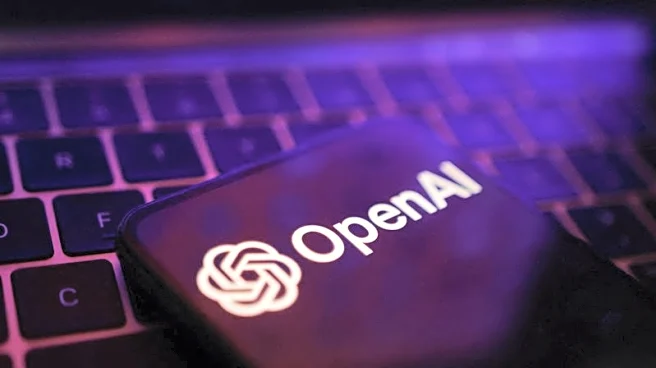What is the story about?
What's Happening?
California Governor Gavin Newsom has signed the Transparency in Frontier Artificial Intelligence Act (SB 53) into law, which mandates AI companies to disclose their safety protocols and report safety incidents. This legislation replaces a previous proposal, SB 1047, which included more stringent requirements such as safety testing and 'kill switches' for AI systems. The new law requires companies with annual revenues of at least $500 million to publish safety protocols on their websites and report incidents to state authorities. However, it does not specify the standards for these protocols or require independent verification. The law targets major AI companies in California, including Google, Meta, and Anthropic, and is seen as a potential model for broader U.S. regulation.
Why It's Important?
The enactment of this law is significant as it sets a precedent for AI regulation in the United States, particularly in California, which is home to 32 of the world's top 50 AI companies. The state also receives more than half of global venture capital funding for AI and machine learning startups. By focusing on disclosure rather than mandatory safety testing, the law aims to balance the protection of communities with the growth of the AI industry. This approach may influence future federal regulations, as the industry continues to advocate for a unified national framework that could supersede state-level laws.
What's Next?
The implementation of this law will likely prompt AI companies to enhance their transparency practices to comply with the new requirements. The California Office of Emergency Services will oversee the reporting of 'potential critical safety incidents,' and the state attorney general can impose civil penalties for noncompliance. As the law takes effect, it may lead to increased scrutiny of AI safety practices and potentially inspire similar legislation in other states or at the federal level. The tech industry will be closely monitoring these developments, as they could impact operational practices and regulatory compliance costs.
Beyond the Headlines
While the law emphasizes transparency, it raises questions about the effectiveness of voluntary safety measures without independent verification. The narrow definition of catastrophic risk, limited to incidents causing 50 or more deaths or $1 billion in damage, may not cover all potential AI-related risks. Additionally, the law's reliance on self-reported data could lead to inconsistencies in safety practices across companies. These factors highlight the ongoing debate about the best approach to regulating rapidly advancing AI technologies.
AI Generated Content
Do you find this article useful?















